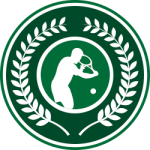With the defeat at the hands of David Ferrer, Lleyton Hewitt, the undisputed leader of the Australian tennis in the last decade of the 20th century, he says goodbye to his long journey as professional player. In Melbourne, facing his countrymen, in the tournament that he always wanted to win and with his family as a witness, the former “enfant terrible” of world tennis has closed a career full of victories and, above all, fight and passion.
The path of the Australian champion cannot be explained without referring to his explosive character; his hallmarks have been the battle, epic, all-out fight and feat, situations where better Hewitt has expressed and where he has taken the best of himself. The Australian has never admitted the defeat before the handshake at the net. His determination was absolute. His total sacrifice. For him there were nothing beyond the victory, and to get it he did not care to transform the match in an almost personal war where, often, his fierce looks, his legendary “come on! ” and his raised fist have resonated more than his racket shots. It did not matter. Lleyton wanted to win and, above all, he hated to lose. He has been the unyielding of the global tennis.
Such an attitude not attracted to him precisely the greatest sympathies. Perhaps the only thing that matters in professional tennis is the victory, but demonstrate it so explicitly became somewhat indigestible to many. He was criticized several times and during his best years he was not the favourite for the public, except in Australia. He had confrontations with some rivals, such as Chela or Coria, and he starred incidents of global impact, as in his match with Blake in the US Open 2001 when he hinted that a black line judge helped his rival because ethnic affinity.
As a player he was very complete, especially behind the base line. But he lacked of a winning shot that outflanked his rivals. His style was based on a solid defence, taking advantage of his legs speed and his excellent ability to move on the court, always waiting for the opportunity to fight back or pass the opponent when the rival was ahead in the net. He knew how to make the most of his characteristics and apply the most appropriate tactics in each match. For example, he was a master serving wide to both sides and coming into the court with his forehand to hit the short return ball of the rival. He celebrated the big points with such intensity that he took the maximum psychological advantage from them, both in terms of his own motivation and discouragement of the rival, whom always received the message of how expensive was the victory.
With these weapons Hewitt built an enviable track record. He burst into the circuit as a tornado and by 1998, with only 16 years old and in his second professional tournament, he emerged victorious in Adelaide beating sacred cows as Draper, Woodforde, Spadea, Agassi and Stoltenberg. He was at that time the 550 in the world. No one has returned to win an ATP tournament with a ranking so low since then. Adelaide 98 Draw
From there, the good results were following. He won the Davis Cup in 1999, although he lost his both individuals in the final, and he finished the year in the top-30; He was Master in 2000 and he was definitely consummate as great champion in 2001 when he won the US Open, defeating Sampras in the final with consecutive sets, and the Masters Cup. On November 19, 2001 he appeared as a world leader on the ATP list. He was 20 years, 8 months and 26 days, the youngest ATP number 1 in the history, a record that still stands. Youngest #1 ATP
The success continued in 2002. He won his second Slam, crowning at Wimbledon before Nalbandian and he defended his title of Master against Ferrero in a tremendous match of five sets, his trademark. Number 1 of the season, from beginning to end, it seemed that with the decline of Sampras and Agassi tennis would have a King for a while.
2003, however, was somewhat disappointing. The season started well, with Scottsdale and Indian Wells titles but in Wimbledon he lost in first round against Karlovic. It was the first time since Santana in 1967, the defending champion loses at the first sign of trouble in All England. As a result he lost the number one, which already he would never recover. The season, however, would end up brilliantly for the glittering “aussie” who lifted up his second Davis Cup in Melbourne, against Spain, being this time the main protagonist of the Australian team, winning the five individual he played.
During the following years Hewitt maintained a great level but he could not achieve the results of 2001 and 2002. He played the final in the US Open 2004 and Australia 2005. But starting from 2006 his results began to decline. His legs were not the same and simply he could not keep the rhythm that Federer, Nadal and Djokovic imposed.
His courage and his will to win always remained unharmed, but his attitude was significantly moderated. He was no longer the arrogant young man who challenged everything and everyone for the victory. He is started to be considered as a great player, whose spirit of struggle and competitive character made him a champion. The spears of the public opinion became gradually rods and Hewitt has finished as one of the most respected players in the circuit. Perhaps in this change of perception was influenced, as well as the maturity of the Australian, the fact that he already could not aspire to the big laurels, who knows?
Hewitt has left for history great battles to remember. Perhaps the greatest of all, the victory against Federer in the semi-finals of the Davis Cup in 2003, when he overturned to the current champion of Wimbledon two sets down and a break in the third. His victory over Ferrero in the final of the Davis Cup in the same year will also be in the memory of those who saw it. Or his victory against Nadal in the Australia Open in 2005, also in five tight sets, where perhaps the Australian should have the feeling to be playing against a mirror.
Not in vain, Hewitt is the second player in the era open who has played more five sets matches. No less than 57, only one behind Ivan Lendl, even though at the time of the Czech champion, five sets matches were more frequent. 5 sets matches all time rank
Some statistics of Hewitt, like the one above, show clearly his brave character. Until 2006, he played 30 games at the limit of five sets. He won 21, a 70%. When the match was played to the best of three, he won 104 of the 148 matches that reached the limit, an also impressive 70,27%. And he was able to overturned 61 of 130 matches of three sets in which he was a set down, an incredible 46,92% which is far from Federer (38.24%), Djokovic (41,22%) and even from the possibly best competitor of history, Rafael Nadal, in this statistic he reaches at 39.75%. Few times the numbers give a reflection so faithful and exact of the character of a player. Hewitt Advanced Stats
Certainly, he could not keep that level. But in his golden years, Hewitt was a headache for anyone. Sampras, for example, won his first three duels. But from Queen’s 2000 Hewitt won in five of the remaining six matches they played. He beat Federer in seven of their first nine matches. Only from 2004 the Swiss clearly, could overcome him, although Hewitt has the satisfaction of finishing the series with his victory in Brisbane 2014. Nadal also suffered with the Australian, losing four of the first five duels. Even Djokovic could not resist the power of the warrior, falling in his first match at the US Open 2006.
To his contemporaries, Hewitt was one of the worst possible rivals. The ties with Roddick and Safin (7-7 with both) are almost his worst results. Moya 7-5, 7-4 to Haas, Henman 9-1, Ferrero 6-4, 8-1 Blake, 6-3 to Grosejan, Kafelnikov 7-1, 7-0 to Bjorkman, 6-1 to Costa and Enquist, 3-2 to Rios… Results that place Hewitt as he is, a great of his time. Hewitt Rivalries
Hewitt quits the racket by the chair. As captain of Copa Davis he will try to revive the Australian wilted laurels. And surely he will try to transmit those values that made him a legend to Tomic, Kyrgios, Kokkinakis and company. Perhaps, if students apply themselves, soon we will have another great warrior in the courts of the world.
Gabriel Garcia / thetennisbase.com



Leave a Reply
You must be logged in to post a comment.